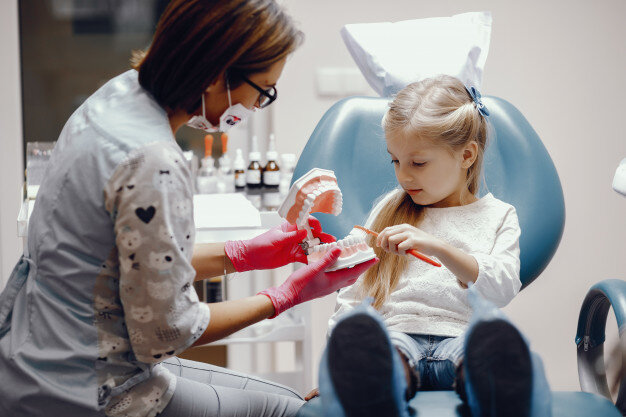August 3-9 was Dental Health Week, so it’s a good time to talk about preventive dentistry. Preventative dentistry’s sole aim to prevent cavities, avoid or catch dental disease in its early, more treatable stages, and avoid gum disease, loss of tooth enamel, periodontitis, and tooth loss later on.
Start preventative dental care early
The very first appointment you should make for your child is when they are 12 months old. Not only does this put them on the right road to maintaining good oral healthcare habits right from the start, but it also allows them to get used to the dentist early. Dental checkups and visits to the dental hygienists every six months after that, ensures your child will have a healthy mouth and a beautiful smile their whole lives.
The two people you need to see for the best preventative dental care
- The dental hygienist: For a good cleaning to remove the accumulation of plaque.
- The dentist: For a thorough examination of your teeth and the soft tissue of your mouth through visual and tactile exams, radiographic examination, such as dental x-rays, and oral cancer screening.
Two procedures most often used in preventative care for children
- As well as using fluoride supplements, dentists often apply dental sealants to children’s teeth. This forms a barrier between the teeth and bacteria, helping to prevent decay.
- Dentists also look for malocclusions – a bad bite and might refer patients to a dental specialist to correct this. While every dental appointment is vital, the next milestone check-up should be with an orthodontist and should take place when your child is seven.
Two places where preventative dental care happens
- At home: Brushing correctly and flossing twice a day is the foundation of good preventative dental care.
- At the dentist: The dental team looks for early signs of periodontal disease, dental decay, injury to the teeth and supporting tissues, and other changes in the soft tissue of the mouth that could lead to oral cancer.
Three levels of preventive oral care used by dentists
- Primary prevention: A topical fluoride gel to prevent caries a.k.a. cavities
- Secondary prevention: A dental restoration i.e. a filling
- Tertiary prevention: For example, a fixed bridge, or a crown
Four preventive dental resources:
Among the many materials dentists use here are the three most common ones used in secondary prevention:
- Fluoride gels or varnishes
- Pit and fissure sealants
- Mouth protectors
- Dental disease prevention medications such as anti-inflammatory mouthwashes
Preventative dental care techniques to diagnose gum disease are constantly being updated. Computerised measurement devices can now discover the bacterial content in your mouth. That’s important because it’s bacteria that form plaque and encourage gingivitis, giving you bad teeth and bad breath. Preventative dental care ensures you always have great teeth and sweet breath. Wouldn’t you rather have that?
How much does it cost?
The question you should be asking is, “How much will it cost to repair teeth after a lifetime of neglect and lapsed dental check-ups?”.
If you need preventative dentistry care advice for your own teeth and are worried about costs, contact us at 0508 TEAM DENTAL and make an appointment today.

